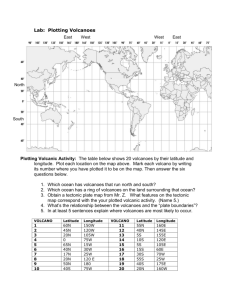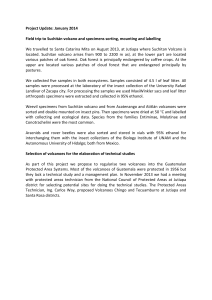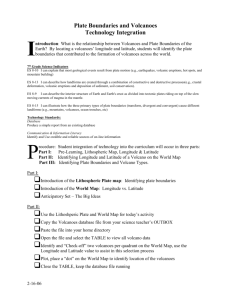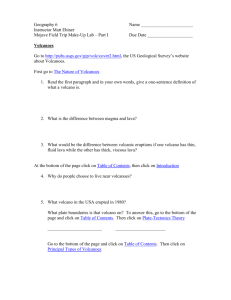Volcanoes, Trenches, and Plate Boundaries
advertisement
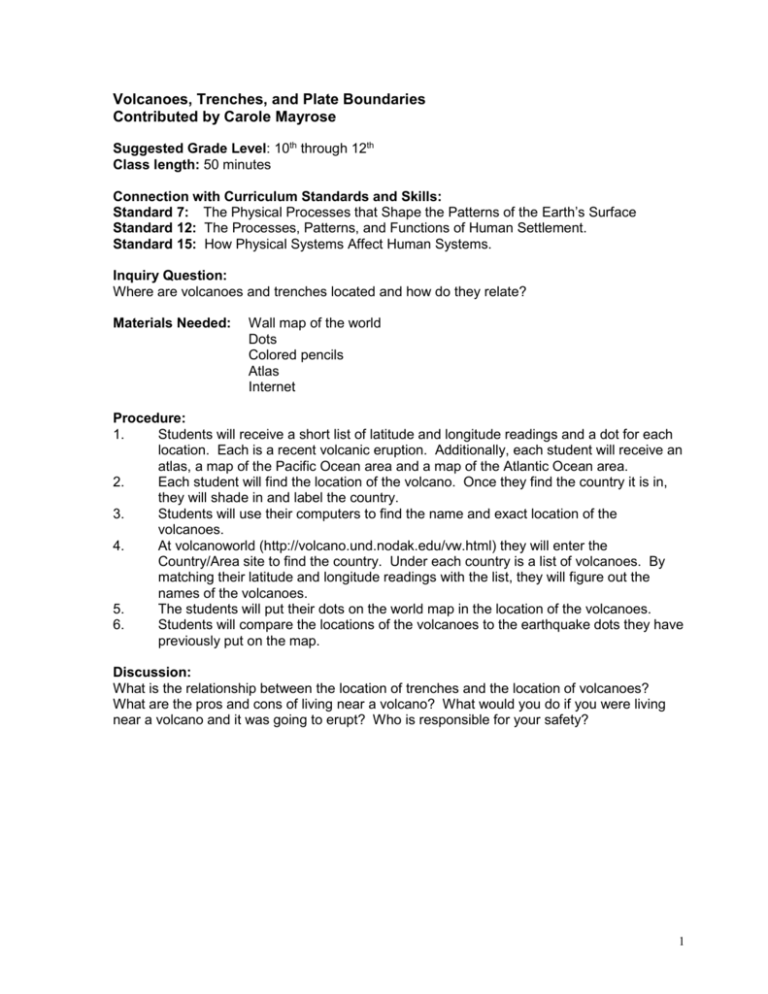
Volcanoes, Trenches, and Plate Boundaries Contributed by Carole Mayrose Suggested Grade Level: 10th through 12th Class length: 50 minutes Connection with Curriculum Standards and Skills: Standard 7: The Physical Processes that Shape the Patterns of the Earth’s Surface Standard 12: The Processes, Patterns, and Functions of Human Settlement. Standard 15: How Physical Systems Affect Human Systems. Inquiry Question: Where are volcanoes and trenches located and how do they relate? Materials Needed: Wall map of the world Dots Colored pencils Atlas Internet Procedure: 1. Students will receive a short list of latitude and longitude readings and a dot for each location. Each is a recent volcanic eruption. Additionally, each student will receive an atlas, a map of the Pacific Ocean area and a map of the Atlantic Ocean area. 2. Each student will find the location of the volcano. Once they find the country it is in, they will shade in and label the country. 3. Students will use their computers to find the name and exact location of the volcanoes. 4. At volcanoworld (http://volcano.und.nodak.edu/vw.html) they will enter the Country/Area site to find the country. Under each country is a list of volcanoes. By matching their latitude and longitude readings with the list, they will figure out the names of the volcanoes. 5. The students will put their dots on the world map in the location of the volcanoes. 6. Students will compare the locations of the volcanoes to the earthquake dots they have previously put on the map. Discussion: What is the relationship between the location of trenches and the location of volcanoes? What are the pros and cons of living near a volcano? What would you do if you were living near a volcano and it was going to erupt? Who is responsible for your safety? 1



